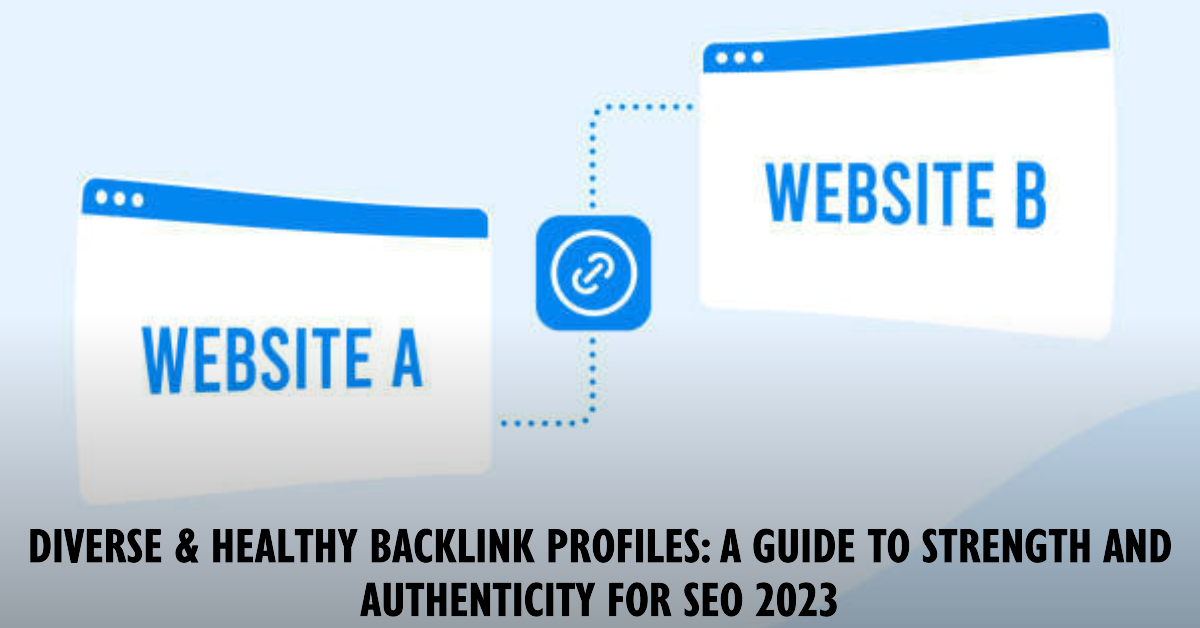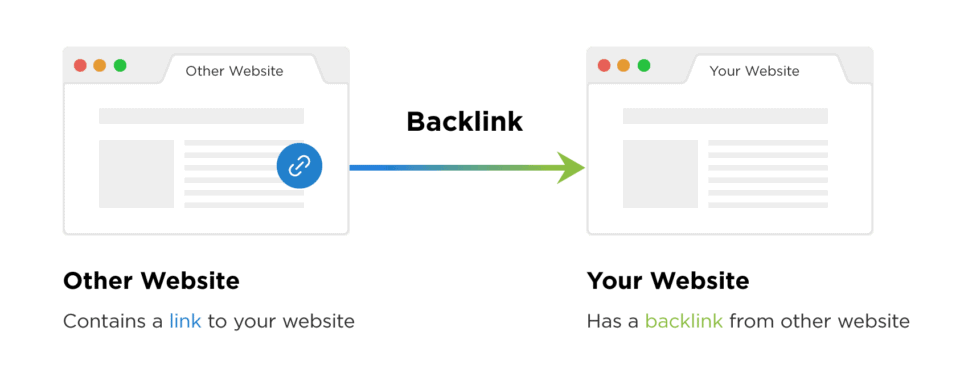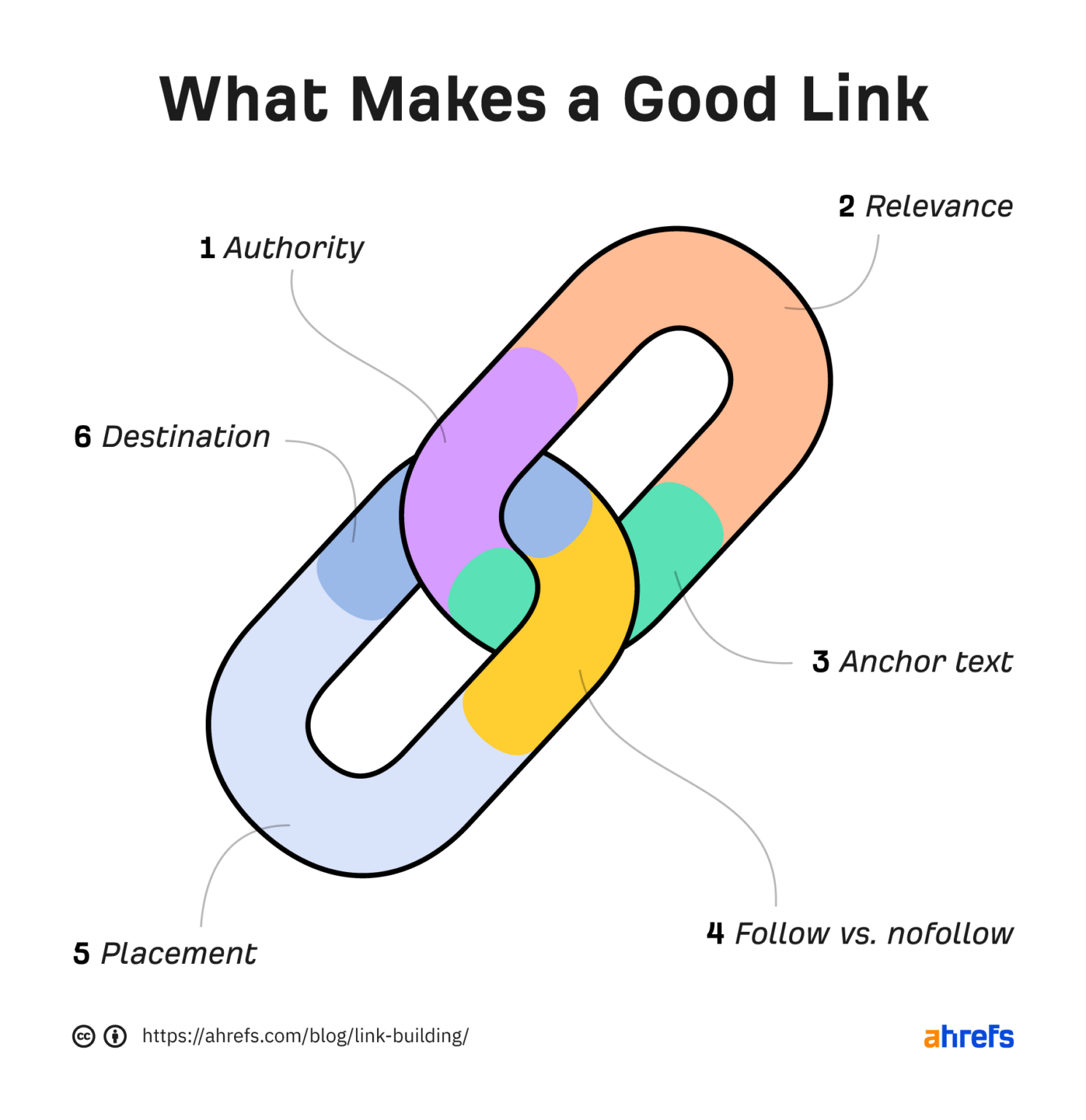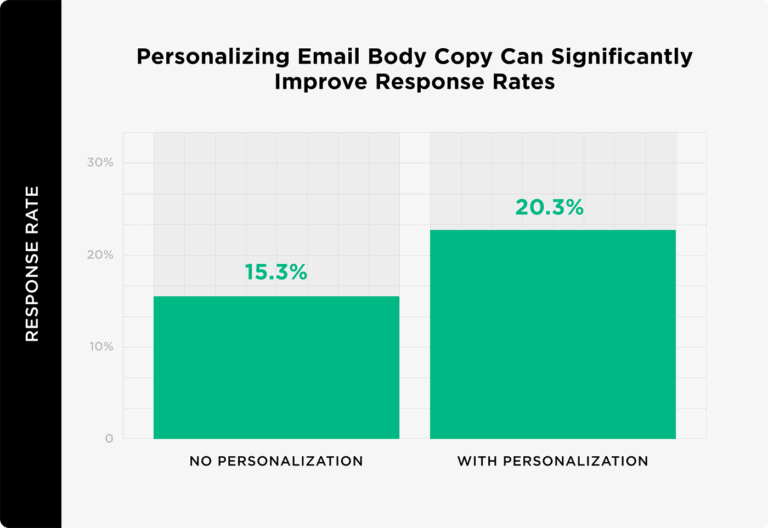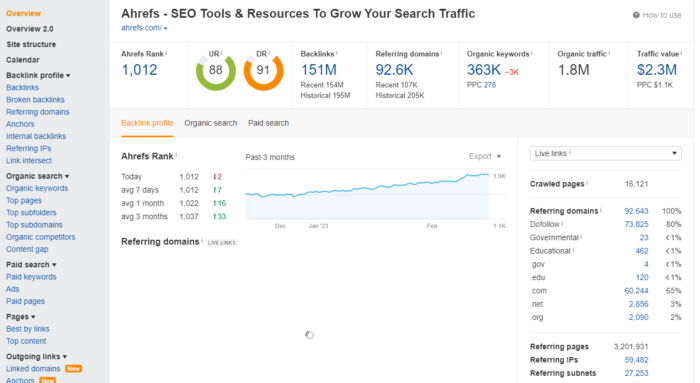Have you ever wondered how search engine algorithms choose the top websites for prominent places in their search results? They have an excellent resource called “links” that facilitates decision-making. Links serve as a kind of mark of approval; the more links a website has, the more trustworthy it seems to search engines.
And guess what? Google and other search engines are continuously developing. To make sure they’re generating the best outcomes, they experiment and test various algorithms frequently.
The secret to success is to maintain diversity. Similar to including a range of nutritious foods in your diet, having a diversity of backlinks is essential. It’s similar to giving your website a solid defense that can survive any unforeseen changes made by search engines.
Oh, and guess what? Those top ten Google champs have roughly 3.8 times as many links as the remaining 100! In the world of search, links are extremely influential.
We will provide the best tips for obtaining links in today’s digital world in this blog. Whether you own a website, engage in marketing, or excel at SEO, we have some excellent techniques to assist you in creating a link lineup that satisfies Google.
Let’s get started and let those backlinks do their magic!
Understanding Backlinks
What are Backlinks and Their Significance in SEO
Have you ever thought about the virtual buddies that connect websites? They’re like online high-fives for your site. They are called backlinks, and they’re like digital bridges that connect two websites.
In the world of SEO, backlinks hold great value. They’re like a nod of approval from one website to another, signaling to search engines, “Hey, this site is the real deal and worth a look!”
Ahrefs explains that the greater the number of top-notch backlinks a website gains, the higher its ranking will be on Google search results. To boost your website’s performance, focus on building a wide and varied collection of top-notch backlinks.
Remember, prioritizing quality backlinks is key – it’s not just about the numbers. Aim for links from relevant and trustworthy sources to rock your SEO game.
Types of Backlinks: Dofollow vs. Nofollow
When a website acquires a backlink from another website, it can be either a dofollow link or a nofollow link. Both types of backlinks play the same role of linking the two websites; however, they tell a different story to search engines.
The table below compares the two types of backlinks based on various features:
| Feature | Dofollow Backlinks | Nofollow Backlinks |
| Search Engine Impact | Passes link equity, positively affects rankings | Does not pass link equity, has no direct impact on rankings |
| Crawlability | Followed by search engine crawlers | Not followed by search engine crawlers |
| Usage | Commonly used for editorial links and organic endorsements | Used for user-generated content, sponsored links, or to deter spam |
| Ranking Factors | Considered a positive endorsement by search engines | Not directly considered as a ranking factor |
| Link Juice | Contributes to the authority and credibility of the linked page | Does not contribute to the authority and credibility of the linked page |
A diverse backlink profile requires a mix of dofollow and nofollow links.
Quality vs. Quantity: Debunking the Myth of Mass Link Building
In the past, SEO was all about getting as many backlinks as possible, no matter where they came from.
But things have changed!
Now, the preference is given to quality links rather than the number of links a website consists has. Backlinks acquired from high-domain authority website plays a more significant role in having a positive impact on website authority and rankings.
Recent data shows that 93.8% of link builders now focus on link quality, not quantity. This means building a diverse and healthy backlink profile with valuable endorsements from authoritative websites in your industry is crucial.
6 Ways to Build a Diverse & Healthy Backlink Profile
In the world of SEO, the power of backlinks cannot be understated. Building a diverse and healthy backlink portfolio requires an effective digital marketing strategy.
While the exact method Google uses to assess link value remains uncertain, the SEO community believes in some general concepts for link evaluation:
- Authority
- Relevance
- Anchor Text
- Follow vs. Nofollow
- Placement
- Destination
Let’s have a look at seven effective ways to achieve a robust backlink profile:
1. Conduct a Backlink Profile Audit
A backlink profit audit refers to the process of analyzing the quality and quantity of backlinks on a website. This process helps you to get to know where your backlinks are coming from, resulting in better performance.
Perform the below-mentioned steps to conduct a successful backlink profile audit:
Analyzing Link Quality and Relevance
In the audit, focus on backlink quality and relevance. Seek links from authoritative sources in your industry, ensuring anchor text and context align with the linked content.
Opt for reputable domains to boost your website’s credibility and SEO performance.
Identifying Toxic and Low-Quality Backlinks
Toxic or low-quality backlinks are the ones that are negatively impacting your website performance. As per Google, these types of links can lead to a website being penalized.
Spammy links usually originate from blog comment links or forums. Therefore, it is essential to identify and disavow these harmful links to protect your credibility and rankings.
Assessing the Diversity of Link Sources
Check your link sources for diversity to create a well-rounded backlink profile. Seek links from blogs, news sites, forums, social media, and industry directories.
A diverse link profile indicates to search engines that your website is a valuable informational resource in your niche.
Analyzing Link Anchor Text Distribution
Be mindful of anchor text distribution in backlinks. Overusing exact-match anchor text can raise search engine red flags and result in penalties.
Aim for a natural mix with branded, generic, and partial-match keywords to keep things balanced.
Examining Link Velocity and Growth
Monitor the rate at which your backlinks are acquired (link velocity) and assess the growth of your backlink profile over time.
Rapid and unnatural spikes in link acquisition may be a sign of manipulative practices. Focus on sustainable and organic link growth to maintain a healthy backlink profile.
Benchmarking against Competitors
To find gaps and possibilities, compare your backlink profile to your rivals.
Look for high-quality sources that your competitors are leveraging and consider replicating successful link-building strategies while maintaining your distinct brand identity.
Here is an example of competitors’ backlink analysis done by Backlinko. They compared links of three competitors (Neil Patel, Search Engine Journal, and Yoast) and saw that their website has links from time.com, oracle.com, and stanford.edu.
So, this analysis helped Backlinko find the websites to target in their next link-building strategy.
2. Define Link Building Objectives and Strategy
To build a diverse backlink profile, define clear link-building goals and tactics. This process involves setting objectives and formulating strategies. Let’s have a look at the steps to set clear link-building objectives and create a strategy:
Set Clear Goals for Link Building Efforts
Begin by establishing clear and measurable objectives for link building.
Whether it’s improving organic rankings, increasing website traffic, or boosting brand awareness, defined goals provide a roadmap for effective link acquisition.
Identify Target Audience and Relevant Niches for Link Outreach
Understand the target audience and identify niche communities and websites where they engage.
A target audience is certain people who are most likely to buy your product or service, as seen in the graphic above. It holds a central position in all your targeting and campaign strategies.
This difference is crucial because it is unique from your target market, which is considerably larger and involves persona targeting—ideal groupings of people that make up your ideal clients.
Outreach to these relevant sources increases the likelihood of earning valuable backlinks from authoritative domains within the target industry.
Design a Content Strategy That Supports Your Link Building Objectives
Craft valuable and shareable content that aligns with the link-building goals. Content should be relevant to and interesting for possible link sources while also catering to the interests and demands of the target audience.
Infographics, guides, research studies, and expert insights are some content formats that often attract organic backlinks.
3. Create High-Quality, Link-Worthy Content
Creating high-quality, link-worthy content is a cornerstone of building a diverse and healthy backlink profile for effective SEO. If your content is valuable, informative, relevant, and interesting, other potential website owners naturally want to provide backlinks to you.
Put your energy into writing legitimate articles, perceptive how-to guides, original research, and eye-catching pictures that present distinctive viewpoints and solutions within your niche.
The process for creating a successful content strategy is illustrated in the above picture. The components of a good strategy include goal definition, persona research, content audit, selection of content type, concept research, publication, and performance management of your content.
Authoritative sources pay attention to link-worthy content, which increases the possibility of obtaining backlinks from trustworthy domains. To increase the authority and relevance of your content, provide facts, numbers, and expert analysis.
Your website’s authenticity, authority, and general SEO performance can be improved by constantly producing high-quality, link-worthy content. This will increase organic traffic and ensure your website’s long-term success in the cutthroat digital environment.
4. Diversify Link Building Sources
In order to create a diversified backlink profile, it is necessary to vary the domains from which links are being obtained. Several methods are listed below for getting various backlink profiles for your website:
Seek Links from Various Types of Websites
Rather than relying on a single type of website for backlinks, broaden your approach to include diverse sources. Seek links from authoritative blogs, reputable news sites, industry-specific portals, and directories related to your niche.
A diverse link profile signals search engines that your website is valuable and relevant across various domains.
Engage in Guest Posting, Interviews, and Expert Contributions to Authoritative Websites
Collaborate with authoritative websites in your industry through guest posting, interviews, and expert contributions.
Through these collaborations, you can demonstrate your subject matter expertise and acquire backlinks from reputable websites, further boosting the authority of your website.
Explore Link Opportunities on Social Media Platforms and Relevant Forums
Discover link opportunities by exploring social media sites and specialized forums.
Engage in conversations, provide insightful information, and take part in forums to get natural backlinks from influential community members and business leaders.
5. Build Relationships and Outreach
Relationship-building and outreach are essential for obtaining high-quality backlinks. A diversified backlink profile results from individualized contact and coordination with influencers and pertinent websites.
Identify Influencers, Thought Leaders, and Industry Experts in Your Niche
Find significant people in your business who have a strong internet presence by doing some research.
Collaboration with these thought leaders can result in insightful information and link opportunities that can help your website get high-quality backlinks.
Reach Out to Potential Link Partners Through Personalized and Value-Driven Outreach
Make compelling outreach messages that are individualized for each recipient and that demonstrate a sincere desire to collaborate with and benefit potential link partners.
Personalization is crucial since it makes a big difference in separating professionals from spammers. According to Backlinko’s research of millions of outreach emails, as is seen in the graph above, personalized emails get 1/3rd as many answers as generic ones.
Demonstrate how connecting to your content can help their audience and further their objectives.
Cultivate Long-Term Relationships with Other Website Owners for Ongoing Link Opportunities
Invest time in nurturing relationships with website owners and content creators in your niche.
Building trust and credibility through ongoing interactions can lead to a mutually beneficial exchange of backlinks and future collaboration opportunities.
6. Monitor and Analyze Backlink Performance
Monitoring backlink performance is vital for a diverse backlink profile, involving analysis of growth, link acquisition rates, anchor text, and impact on rankings and traffic. Let’s examine how you can monitor and analyze your backlink performance:
Track Your Backlink Profile’s Development and Health using Backlink Analysis Tools
Use tools like Ahrefs, Majestic, or Moz to get information about how many other websites are linking to yours, how many different domains are linking, and the overall growth of your link-building profile.
These tools can help you find new opportunities to get links, keep an eye on how you’re getting new links, and keep up with the health of your backlinks.
Here is an example of the Ahrefs tool providing data related to backlink profiles.
Monitor Link Acquisition Rates, Anchor Text Distribution, and Link Quality
Make sure you watch how quickly you get new backlinks so they grow naturally. Also, check the words used in the links. You should have a mix of generic, branded, and partial-match keywords.
Also, take a close look at the websites that are linking to yours. Make sure they’re good and trustworthy, so you don’t get bad or unwanted links that could damage your site’s reputation.
Continuously Assess the Impact of Backlinks on Organic Rankings and Traffic
If you want your website to be at the top, you need to always keep an eye on how backlinks affect your ranking and the people visiting your site.
If you study which backlinks help your website do better and show up more in organic search results, you can make your link-building plan even better.
Adapt to SEO Trends and Algorithm Changes
Having good SEO is really important for a business to do well on the internet and get and keep customers. But SEO isn’t something you do just once and forget about.
You must constantly observe, study, and adapt if you want to stay on top of the most recent trends and algorithm adjustments influencing the ranks and functionality of your website.
Keep Current with the Latest SEO Trends and Search Engine Algorithm Updates
Nobody, including website owners and company owners, can afford to neglect SEO. If you want your website to keep expanding, SEO is crucial.
Your business won’t grow if you don’t bring in the right customers to your website.
It could be challenging to understand SEO tactics. When you think you have a plan in place, Google catches you off guard with a brand-new algorithm that affects all of your efforts.
Since Google algorithms and SEO trends are always changing, it’s imperative for website owners to keep up.
Conclusion
The most significant conclusion for 2023 is that a diverse and vast collection of backlinks is essential.
High-quality, data-driven methods must come first in the ever-evolving SEO sector. Google rewards trustworthy backlinks from diverse websites.
Businesses and website owners should assess the efficacy of different link-building tactics. Once you realize how important backlinks are to both client happiness and search engine rankings, you can develop a successful strategy.
Make use of the suggestions offered in this blog to improve your backlinking skills and grow your business.
